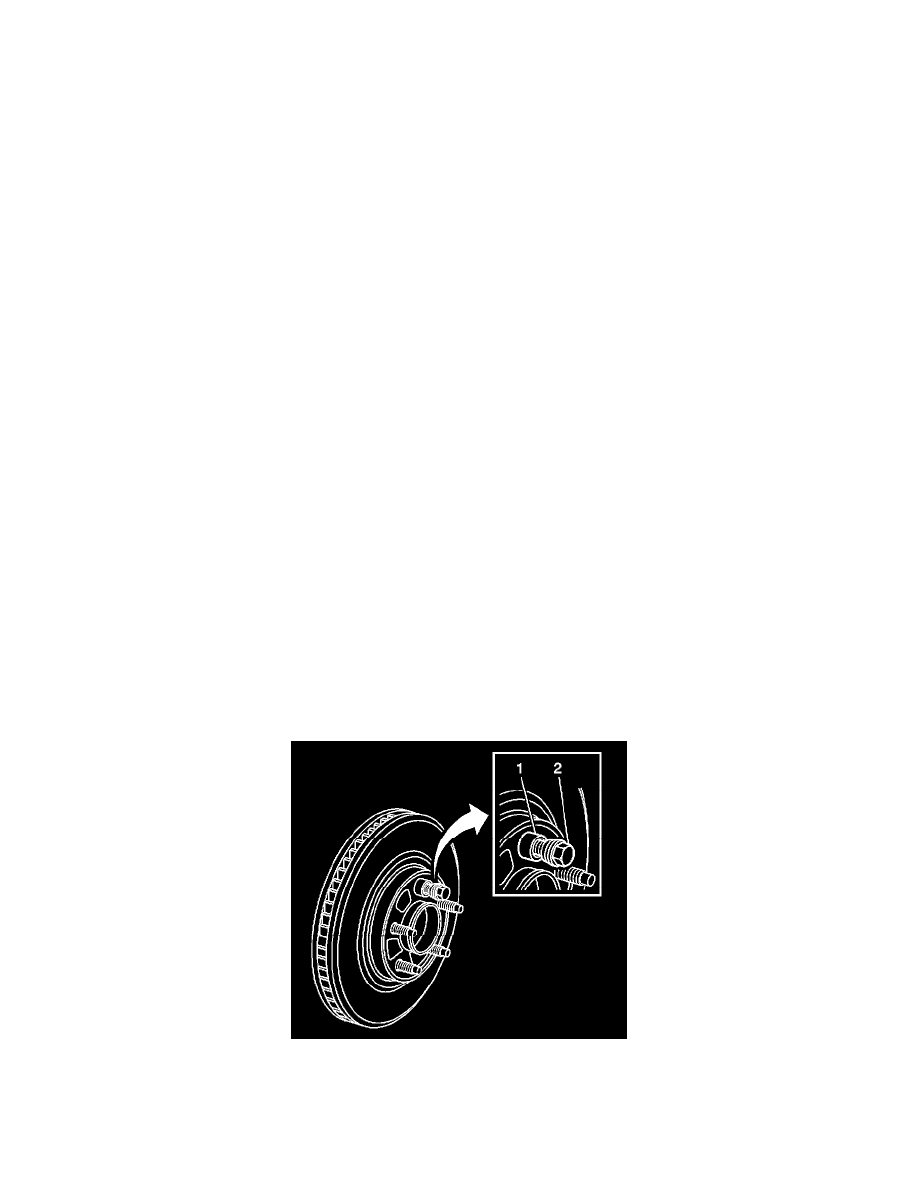Escalade AWD V8-6.2L (2009)

Brake Rotor/Disc: Testing and Inspection
Brake Rotor Assembled Lateral Runout Measurement
Brake Rotor Assembled Lateral Runout Measurement
Special Tools
*
J-39544-KIT - Torque-Limiting Socket Set , or equivalent
*
J-41013 - Rotor Resurfacing Kit
*
J-42450-A - Wheel Hub Resurfacing Kit
*
J-45101 - Hub and Wheel Runout Gage
*
J-45101-100 - Conical Brake Rotor Washers
Warning: Refer to Brake Dust Warning (See: Service Precautions/Technician Safety Information/Brake Dust Warning).
Note:
*
Brake rotor assembled lateral runout (LRO) exceeding the maximum allowable specification can cause thickness variation to develop in the brake
rotor over time, usually between 4 800-11 300 km (3,000-7,000 mi).
*
Brake rotor thickness variation MUST be checked BEFORE checking for assembled lateral runout (LRO). Thickness variation exceeding the
maximum acceptable level can cause brake pulsation. Refer to Brake Rotor Thickness Variation Measurement (See: Brake Rotor Thickness
Variation Measurement).
1. Matchmark the position of the brake rotor to the wheel studs if this has not been done already.
Note: Whenever the brake rotor has been separated from the hub/axle flange, any rust or contaminants should be cleaned from the hub/axle flange
and the brake rotor mating surfaces. Failure to do this may result in excessive assembled lateral runout (LRO) of the brake rotor, which could lead
to brake pulsation.
2. Inspect the mating surface of the hub/axle flange and the brake rotor to ensure that there are no foreign particles, corrosion, rust, or debris
remaining. If the wheel hub/axle flange and/or if the brake rotor mating surfaces exhibit these conditions, perform the following steps:
1. Remove the brake rotor from the vehicle. Refer to Front Brake Rotor Replacement (1500 Series) (See: Service and Repair/Removal and
Replacement/Front Brake Rotor Replacement (1500 Series))Front Brake Rotor Replacement (2500 Series) (See: Service and Repair/Removal
and Replacement/Front Brake Rotor Replacement (2500 Series)) and/or Rear Brake Rotor Replacement (1500 Series) (See: Service and
Repair/Removal and Replacement/Rear Brake Rotor Replacement (1500 Series))Rear Brake Rotor Replacement (2500 Series) (See: Service
and Repair/Removal and Replacement/Rear Brake Rotor Replacement (2500 Series)).
2. Using the J-42450-A - Wheel Hub Resurfacing Kit , thoroughly clean any rust or corrosion from the mating surface of the hub/axle flange.
3. Using the J-41013 - Rotor Resurfacing Kit , thoroughly clean any rust or corrosion from the mating surface of the brake rotor.
4. Clean the friction surfaces of the brake rotor with denatured alcohol, or an equivalent approved brake cleaner.
3. Install the rotor to the hub/axle flange using the matchmark made prior to removal.
4. Hold the rotor firmly in place against the hub/axle flange and install one of the J-45101-100 - Conical Brake Rotor Washers (1), and one lug nut
(2) onto the upper-most wheel stud.
5. Continue to hold the rotor secure and tighten the lug nut firmly by hand.
